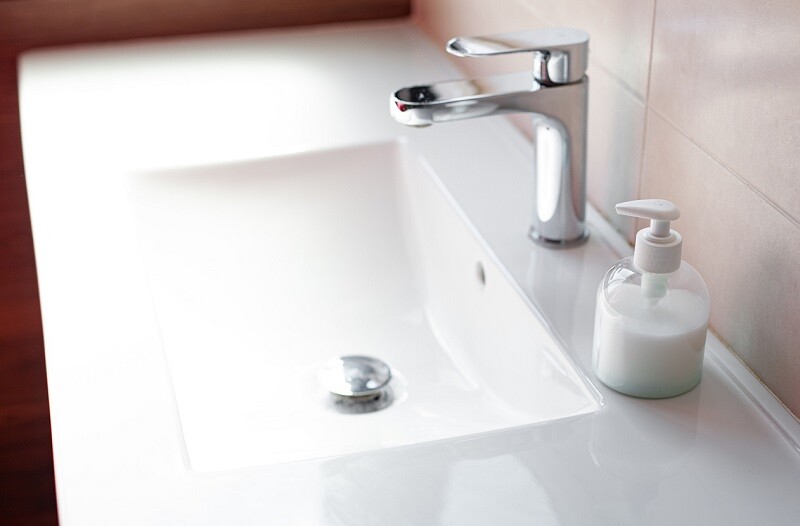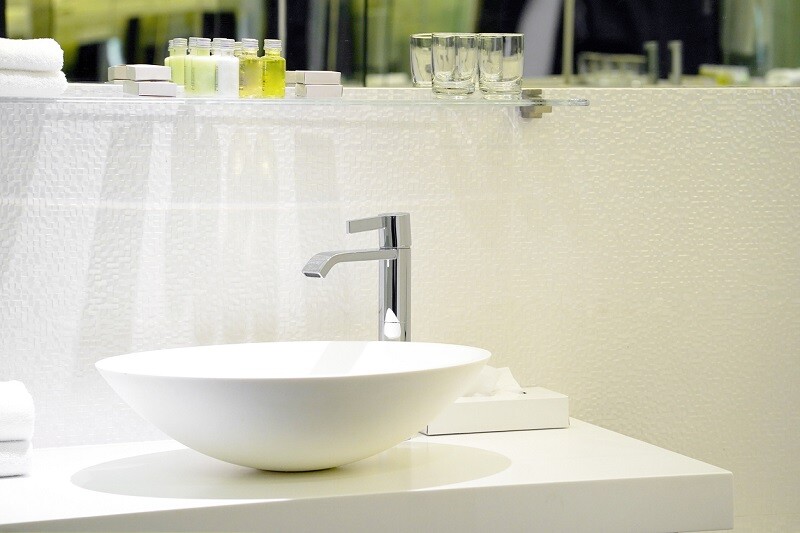
One-Piece vs Two Piece Toilet – Pros and Cons- 2025 Expert Guide
When upgrading your bathroom, one of the most important—and often overlooked—decisions is choosing between a one-piece or two-piece toilet. While
First, do not be alarmed, as many bathroom sinks crack. Lower quality materials such as fiberglass and porcelain are less durable and need to be handled with care to avoid cracking. So today we will discuss common reasons why your bathroom sink is cracking and how to repair it and ensure that it doesn’t happen again.
It’s a fact that many bathroom sinks inevitably crack due to poor use with a more delicate material like porcelain. Here are some common reasons why your sink may be cracking.

Like most things, sinks do not enjoy drastic temperature shifts. Extreme temperature changes, such as hot water in a cold sink or ice cold water in a hot sink can denature and change the physical aspect of the material. In the case of less durable materials such as porcelain, fiberglass, wood and glass, these materials will eventually break down and erode if exposed to drastic temperature shifts over long periods of time. These usually will manifest as cracks, material stripping or warping.
Overtime, some sink materials can begin to age and crack. If not repaired and treated properly, natural cracks can result in even bigger cracks that can cause the deterioration of the sink itself. Natural hairline cracks are common in natural stone sinks as a result of the construction process which creates grains and points of weakness in the sink structure itself.
Most sink and bathtub materials on the market cannot sustain heavy impacts. They are made to resist and weather natural erosion, not blunt force. This statement rings true for common sink materials such as porcelain, fiberglass, acrylic, fireclay and glass. Copper, stone resin, stainless steel and quartz can weather heavy impacts, but you can easily scratch these materials, so avoid dropping heavy impacts on your sink.
Many manufacturers use layers of steel to strengthen sinks constructed from weaker materials such as porcelain and fiberglass. While this does strengthen the structural integrity of the sink, the steel will eventually rust. Rust poses many problems as it is a result of the metal oxidizing with the air around it which causes it swell and place more strain on the supports of a structure. If not treated properly, any sink constructed from steel or other metals will cause hairline cracks in your sink’s structure.
Now we’ve established the dangers to your sink, how do you protect it? Here are some ways you can safeguard against cracking and ensure that you do not have to deal with a larger headache in the future.

As we discussed previously, cracks in your sink can ultimately lead to larger cracks and eventually structural loss of your sink, ie, your sink breaking in half. To prevent this, it is important that you repair cracks as soon as you notice them. This can be done with either an epoxy, also known as plumbers putty which creates a watertight seal in the crack. Similarly, many professionals also use silicone caulk-both are acceptable options for repairing cracks.
To prevent cracks from forming in the first place, you should advocate daily cleaning of your sink. Although it may seem mundane, just a daily wash of debris and other elements can lead to better longevity for your sink. Excess moisture can lead to mildew, which can ultimately lead to the denature of the material, which will weaken the structural integrity, resulting in cracks. So, to preserve the quality of your sink, make sure to clean it regularly.
As expressed previously, avoid exposing your sink to extreme temperature shifts. Try to use warm water to gradually bring your sink to a higher temperature before switching to hot water. Or, if you see yourself using hot water quite frequently, consider purchasing a sink material such as copper or stone resin that can handle higher temperatures.
All sink manufacturers will provide you with a list of do’s and don’ts. Similar to what we’ve stated before, this list will inform you about the material your sink is constructed from and what it can and cannot handle. Like in the case of porcelain, avoid high temperatures and heavy impacts on the sink to avoid cracks. Or in the case of natural stone, repair hairline cracks as soon as they are readily visible. Be sure to follow your manufacturer’s instructions so you can practice good habits with your sink to ensure it’s longevity.
Sometimes, even after a great deal of effort, your sink cannot be salvaged. Here are some things to consider when looking for a new sink to avoid the headache of your last sink.
Sometimes, it is much easier to replace your sink than attempt to repair it. This is especially true if the material is expensive or difficult to work with. Fiberglass and porcelain sinks are fairly inexpensive materials compared to other sink materials, which makes it more worthwhile to simply replace rather than attempt the repair. When replacing, focus on higher end material such as stone resin, copper, cast-iron or natural stone. A higher quality material will be much easier to use and can withstand a greater deal of abuse, saving you fewer trips to the store.
Many bathroom fixtures such as sinks and bathtubs will eventually wear out with heavy use. To avoid the headache of having to repair your sink constantly, do the research and invest in a higher quality material for your bathroom. A better sink material will result in less cracks and fewer headaches for you down the road.

Eric is the founder and president of Badeloft USA. He has been the president of Badeloft’s US division for over ten years and oversees all marketing and branding aspects of Badeloftusa.com.
His expertise lies in small business development, sales, and home and bathroom industry trends and information.
Contact us with any business related inquiries.

Free material samples and tub templates

When upgrading your bathroom, one of the most important—and often overlooked—decisions is choosing between a one-piece or two-piece toilet. While

Small details, including what you place on the floor, can make a big difference when setting up or upgrading your

Plumbing traps may seem like small components, but they are critical in keeping your home safe and odor-free. Two of
When shopping for new bath linens, the difference between a bath towel and a bath sheet can feel subtle, but
Request your free material sample below. By submitting, you agree to receive occasional product updates and offers from Badeloft. Unsubscribe anytime.
"*" indicates required fields
"*" indicates required fields
"*" indicates required fields